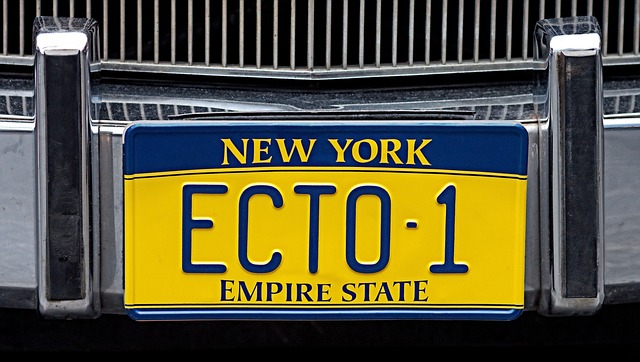DMV registration fees vary widely based on vehicle type, size, weight, horsepower, intended use, location, age, and environmental impact. Online platforms enhance transparency and accessibility, allowing residents to easily understand and navigate fee structures for various vehicle transactions. A DMV registration checklist ensures a smooth process by outlining every necessary step and document requirement. Unexpected fees, such as titling and license plate costs, may apply; staying organized and setting reminders can prevent late fees. Digital transformation makes registration more convenient with online payment options, benefiting new owners, renewals, and those who prefer remote transactions.
Navigating the labyrinth of DMV registration fees can be a daunting task, but demystifying these charges is key to saving time and money. Whether it’s your first vehicle registration or an annual renewal, understanding how fees vary based on your car’s type and location is essential. Recent developments in state DMV policies highlight a growing trend towards transparency and online accessibility, making fee management more straightforward than ever. This article guides you through the intricacies of DMV fees, from vehicle classification to digital tools like registration checklists, ensuring you’re well-informed for every step of the process.
- Vehicle Type Impacts DMV Fees
- Location-Specific Charge Variations
- The Shift Towards Online Transparency
- Utilizing DMV Registration Checklist
- Common Additional Charges Explained
- Time-Saving Tips for Renewal Process
- Maximizing Accessibility for Fee Payment
Vehicle Type Impacts DMV Fees

DMV registration fees aren’t one-size-fits-all; they vary greatly based on your vehicle type. Cars, motorcycles, trucks, and recreational vehicles each have distinct fee structures, influenced by factors like size, weight, horsepower, and intended use. For instance, larger or more powerful vehicles might face higher fees due to safety considerations and environmental impacts. Conversely, smaller, fuel-efficient cars may be subject to reduced rates, reflecting their lower emissions and energy consumption. Location also plays a role; DMVs in urban areas often have different fee schedules compared to those in rural regions, accounting for varying costs of living and local infrastructure needs.
Understanding these variations is crucial when navigating the registration process. By knowing how your vehicle type affects fees, you can budget accordingly and avoid unexpected charges. Additionally, staying informed about regional differences ensures you’re paying fair, location-specific rates. This proactive approach not only saves time but also fosters a transparent and responsible relationship with local DMVs.
Location-Specific Charge Variations

DMV registration fees aren’t one-size-fits-all; they vary greatly from state to state, and even within a given state, charges can differ based on your vehicle’s type and age. For instance, while a standard passenger car might have a base registration fee of $50, a high-performance sports car could be subject to higher fees due to its potential environmental impact or safety considerations. Similarly, older vehicles may incur additional emissions testing fees. Location also plays a significant role; urban areas with heavier traffic and congestion often have higher registration costs to fund road maintenance and public transportation. On the other hand, rural regions might offer discounts to encourage the use of less-trafficked roads. These variations underscore the importance of checking your local DMV’s fee structure before initiating the registration process.
The Shift Towards Online Transparency

The digital age has brought about significant changes in how we interact with government services, and DMV registration is no exception. There’s a growing trend among state DMVs to enhance transparency and accessibility through online platforms. This shift ensures that individuals can easily understand and navigate the fee structure for various vehicle-related transactions. With just a few clicks, residents can now access up-to-date information about registration costs, including any applicable discounts or surcharges.
Online transparency simplifies the process by providing clear breakdowns of fees based on vehicle types—from standard cars to motorcycles and recreational vehicles. It also offers a user-friendly interface for payment, eliminating the need for physical visits and reducing potential waiting times. This modern approach to DMV services is a win for both customers and government agencies, fostering efficiency and convenience in managing vehicle registration.
Utilizing DMV Registration Checklist

A DMV registration checklist is a valuable tool for anyone navigating the complex process of vehicle registration. It serves as a comprehensive guide, ensuring no detail is missed during an often-overwhelming experience. By following this checklist, first-time registrants and seasoned renewers alike can stay organized and prepared, avoiding any last-minute surprises or extra fees.
This checklist typically includes all the essential steps, from gathering necessary documents to understanding fee structures. It breaks down the process into manageable segments, making it easier to comprehend and complete. By keeping this checklist handy, you can confidently work through each stage, ensuring a smooth registration experience.
Common Additional Charges Explained

Many DMV registration processes come with fees that might catch you off guard, especially if it’s your first time. Common additional charges can include a variety of factors. One such charge is the titling fee, which is assessed when registering a vehicle for the first time or transferring ownership. This fee varies by state but typically covers administrative costs related to processing the title and registration documents.
Another prevalent additional charge is the license plate fee. While some states include this in the initial registration cost, others calculate it separately. This fee often includes the cost of producing and issuing a new license plate or updating an existing one, which can vary based on your vehicle’s size (e.g., standard car versus SUV) and the plate design chosen.
Time-Saving Tips for Renewal Process

Staying organized is key when it comes to renewing your vehicle registration. First, gather all necessary documents, including your vehicle’s registration and title, a valid driver’s license, proof of insurance, and any other required forms specific to your state. Create a checklist to ensure you don’t miss any steps or documentation.
Online renewal processes are now available in many states, offering a quick and convenient way to complete the task. This method allows you to verify fees, update your information, and even print your new registration right from home. Additionally, setting reminders for upcoming renewal dates can save you from last-minute stress and potential late fees.
Maximizing Accessibility for Fee Payment

In today’s digital era, state DMVs are enhancing their online platforms to make fee payment more accessible than ever. Many now offer secure and convenient methods for users to calculate, review, and pay registration fees directly from their devices. This shift towards digital accessibility not only saves time but also promotes transparency by providing clear fee structures upfront. Online portals often feature user-friendly interfaces, allowing drivers to input specific vehicle details and immediately receive accurate fee estimates.
Maximizing this accessibility means that new car owners or those renewing their registration can complete the process efficiently without visiting a physical DMV office. It also ensures that individuals with busy schedules or disabilities can manage their vehicles’ paperwork conveniently and independently.
Navigating DMV registration fees can seem like a labyrinth, but staying informed is key. By understanding the factors influencing fees, leveraging online tools and resources, and staying up-to-date with state initiatives, you can efficiently manage your vehicle’s registration without hidden costs. Remember that transparency and accessibility are paramount, ensuring a smoother process for all.



